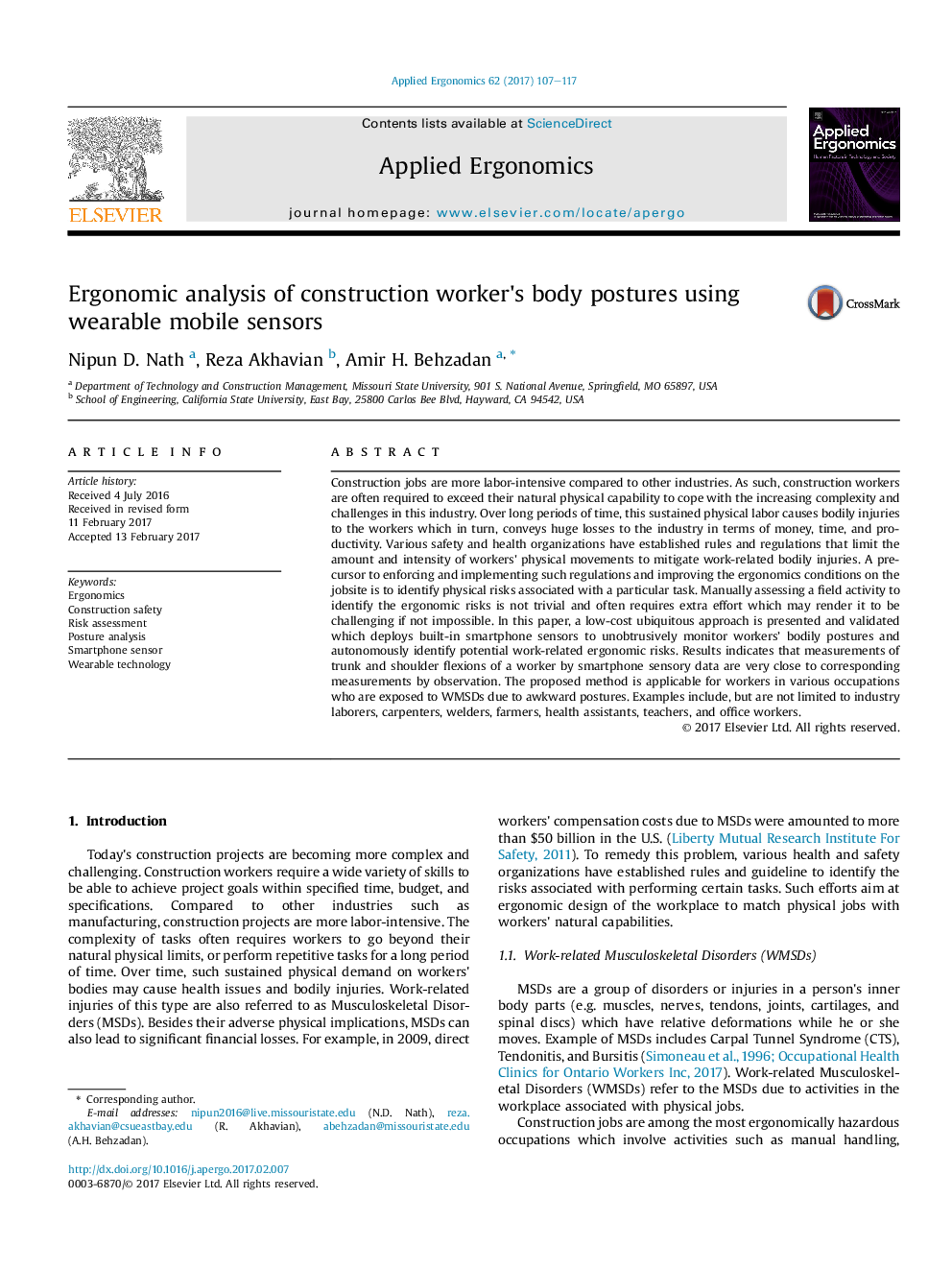| Article ID | Journal | Published Year | Pages | File Type |
|---|---|---|---|---|
| 4972045 | Applied Ergonomics | 2017 | 11 Pages |
Abstract
Construction jobs are more labor-intensive compared to other industries. As such, construction workers are often required to exceed their natural physical capability to cope with the increasing complexity and challenges in this industry. Over long periods of time, this sustained physical labor causes bodily injuries to the workers which in turn, conveys huge losses to the industry in terms of money, time, and productivity. Various safety and health organizations have established rules and regulations that limit the amount and intensity of workers' physical movements to mitigate work-related bodily injuries. A precursor to enforcing and implementing such regulations and improving the ergonomics conditions on the jobsite is to identify physical risks associated with a particular task. Manually assessing a field activity to identify the ergonomic risks is not trivial and often requires extra effort which may render it to be challenging if not impossible. In this paper, a low-cost ubiquitous approach is presented and validated which deploys built-in smartphone sensors to unobtrusively monitor workers' bodily postures and autonomously identify potential work-related ergonomic risks. Results indicates that measurements of trunk and shoulder flexions of a worker by smartphone sensory data are very close to corresponding measurements by observation. The proposed method is applicable for workers in various occupations who are exposed to WMSDs due to awkward postures. Examples include, but are not limited to industry laborers, carpenters, welders, farmers, health assistants, teachers, and office workers.
Related Topics
Physical Sciences and Engineering
Computer Science
Human-Computer Interaction
Authors
Nipun D. Nath, Reza Akhavian, Amir H. Behzadan,
